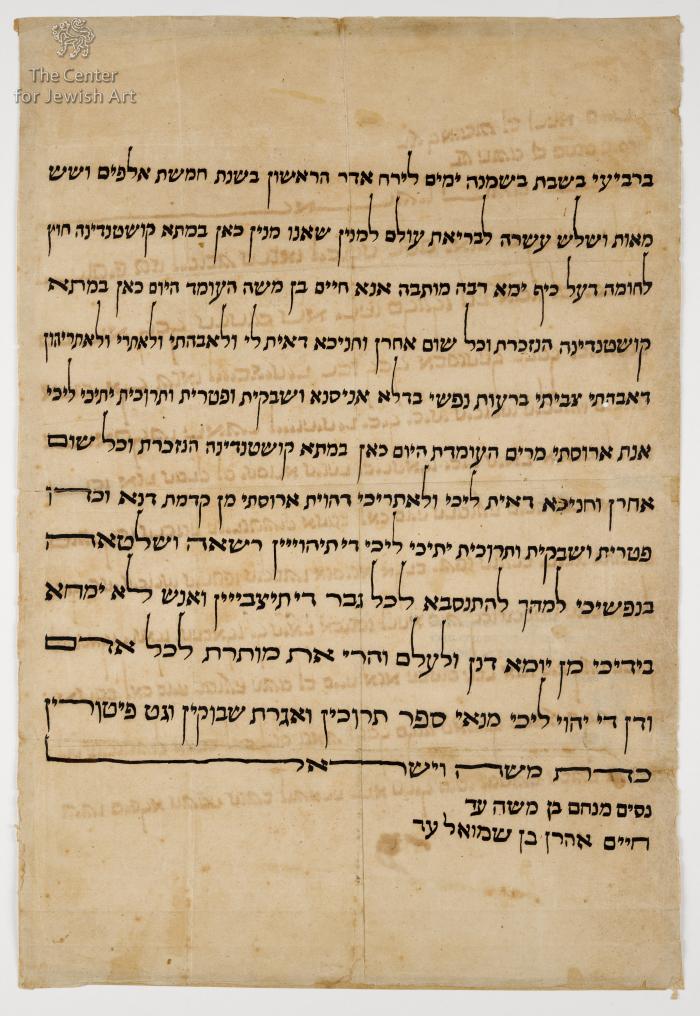Obj. ID: 45759
Hebrew Illuminated Manuscripts Get for an Arusa, Turkey, 1854

The following description was prepared by William Gross:
Get for an Arusa (divorce document for a fiancée), written for “Chaim ben Moshe” and his Arusa Miriam. Constantinople, Adar Aleph 1853. On the reverse side of the Get is an inscription written a year later in the handwriting and with the signature of Rabbi Natan Amram, Rabbi of Thebes (Alexandria, Egypt): “In the past, this Get has reached my hands and did not have a tear of the Beit Din…on the seventh day of the month of Nisan 1854, Natan Amram” [curly signature in Latin letters]. This inscription was to prevent improper use of this Get which did not have a tear of the Beit Din [which indicates that the Get was delivered in accordance with Jewish law]. The famous Torah genius Rabbi Natan Amram (1791-1871), author of Kinyan Perot and Kinyan HaGuf and Noam HaMidot, was born in Damascus to Rabbi Chaim Amram, author of Mi’ta’am HaMelech. In 1805, he ascended with his father to Safed and from 1826, he began to make rounds as a Shadar (emissary) of the Tiberias and Hebron Kollelim, first in Thebes (Alexandria) Egypt and afterward also throughout the Jewish communities of Turkey and Greece. During the years he served as emissary, he printed some of his own books and his father’s books. Finally, he returned to Egypt and after the death of Rabbi Yisrael Moshe Chazan in 1863, he was appointed his successor as Av Beit Din in Thebes.



